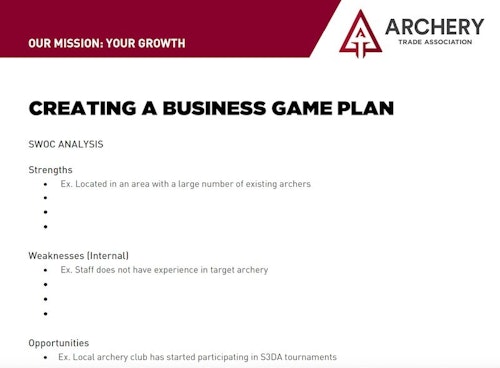You can line up tons of sales and events year-round, but if you lack a marketing plan to tell customers about them, then your program might perform poorly.
Why Create Marketing Plans?
Good marketing explains what businesses are, what they do, what they offer, and why customers should buy from them or connect with their brand. Marketing helps brands attract customers, increase sales, get the edge on competitors, build brand awareness and credibility, and generate interest with partners and investors.
Marketing plans should provide clear directions that lay out your tools and tactics to generate sales, and recruit and sustain customers. They can guide your efforts for three, six or 12 months. Whatever your goal, continually analyze the plan’s performance, and adapt if it’s falling short.
In some ways, creating marketing plans is like cooking meals. You decide what to cook, gather the ingredients, and follow a recipe to create a meal. After sampling the dish, you tweak its ingredients, and adjust your cooking time to maximize results. In marketing, consider the ingredients as your target audience and marketing techniques. The instructions outline the process that connects with your target audience by using your chosen marketing techniques. Both steps require planning and decisiveness. Once you complete the plan, assess your efforts to learn what to change to achieve better results next time. Some “recipes” take longer than others, and some produce better results. Keep “cooking” until finding a plan that works.
Marketing’s vastness can easily overwhelm you. It takes time, research, and trial and error to get it right. The following steps should help.
Create a 5-Step Killer Marketing Plan
Step 1: Brainstorm and Set Goals
Analyze your business to learn where it is and where you want to go. If you opened only a few months ago, you probably want more customers. If you’ve been in business several years and have a strong customer base, consider leveraging it to stabilize your cash flow.
Conduct a strengths, weaknesses, opportunities and challenges analysis, or “SWOC Analysis,” to help determine your business goals. Log into your MyATA member dashboard and click the “Download Free ATA Resources” section for the Resource Website. Search for “Creating a Business Game Plan” to find a SWOC Analysis worksheet.
Also gather financial reports, create a list of your products and services, and discuss potential customer-service improvements with your team. Do you want more customers? More sales? Better programming? More brand awareness? After you determine those goals, the next steps are tracking and measuring your efforts. The rest of your plan should outline how to achieve your goals.
Step 2: Understand Your Marketplace
Conduct a market analysis to identify and study your competitors and target audience. An analysis helps create a marketing plan suited to your business and community. You can find free market-analysis tools online.
Competitors: Find nearby competitors and try to pinpoint their strengths and weaknesses. Identify what makes your business unique or different from your competitors.
Use that information to craft your marketing strategy. Use marketing techniques your competitors overlook, and highlight your business features they lack.
Customers: Identify potential customers, their demographics, their buying and spending habits, and where they live or hang out. Look for gaps in current marketing plans. If your area has a high concentration of kids, but you aren’t marketing to children or families, you’re likely hurting your business.
Focus on niche audiences to get the best, most obvious returns on your investments. Do you want to target high school students for your Junior Olympic Archery Development program? Or do you want to target young women for your women’s league? Also consider themed audiences. Target health-conscious people or those who love wildlife and wild places.
Step 3: Determine How/Where to Invest
Determine how much time and money you can spend on marketing. Make the most of each minute and dollar. Use your market analysis and insights into your competitors and potential customers to choose affordable marketing options that reach your target audience.
Marketing techniques include email, sponsorships, word-of-mouth advertising, TV commercials, outdoor billboards, and direct-mail campaigns, as well as ads for radio, newspapers, magazines, websites or social media. Use channels that engage your target audience.
Each audience has its own preferred communication methods. Some research shows baby boomers (age 50 and older) prefer TV over streaming platforms such as Hulu or Netflix; and that gen X-ers (35 to 49) check emails often; and millennials (18 to 34) often read blogs and use social media. Therefore, marketers should consider TV commercials to reach older archers, and social-media campaigns to reach younger audiences.
Step 4: Take Action, Create Tasks
Use data you compile to create tasks to complete daily or weekly. Make each item actionable. For Facebook campaigns, a sample task list for a post might look like this:
- June 10: Find an image to run alongside Facebook post.
- June 13: Learn the best time to post something to reach audience “y.”
- June 15: Write a post and ask a coworker to review the content.
- June 17: Create a Facebook post and publish it.
- June 18-24: Reply to comments on Facebook posts.
- June 28: Check the post’s reach and engagement stats.
To-do lists keep you organized and on track to meet goals. Lists also break down daunting marketing plans into manageable and approachable steps. Include tasks that remind you to check progress and analytics to see how many people viewed or interacted with your social posts. You can also get statistics on how many saw your TV, radio, newspaper or magazine ads. Put your list in a visible spot for daily reference.
Step 5: Evaluate and Reassess
Evaluate your marketing plan or campaign’s success once it finishes. Compare the analytics to your goals. Answer these questions to assess your business, and adapt as necessary in your next plan.
- Did you reach your goal?
- Did you budget enough money to use several marketing channels?
- Did you dedicate enough time to give your plan a realistic trial?
- Did you connect with your target audience?
If you created a six- or 12-month plan, check in regularly throughout the process. How much money have you spent and how close are you to your goals? If your plan is falling short, make changes. You can reduce or amplify your efforts, or add tasks to increase the pace.
Meanwhile, monitor consumer comments and feedback on your marketing efforts to avoid negative reactions or pushback. Customers will let you know if you posted or published something false, inaccurate or controversial. To avoid those possibilities, run your plans by peers or coworkers, and ask them to fact-check your materials.
Your business goals and priorities can shift over time, so be ready to readjust. Marketing plans should be dynamic. They should change and evolve as your business grows and transforms. As you try new strategies and techniques, monitor which ones work well and learn why.

Get Help
If marketing isn’t your forte, or you want help kickstarting your efforts, seek assistance. Consider hiring a part-time employee to create and manage some marketing campaigns. Or work with a MyATA service provider. These ATA-vetted companies offer ATA members expert support and discounts on their services. Visit www.archerytrade.org/myata-service-providers to explore your options.
If you can’t afford to hire help, work with a college to create an internship or other opportunities for students to earn college credits. Colleges and technical schools often have marketing students eager for real-world experience. Use their skills and creativity to ensure your plan is thorough, sensible and attention-grabbing. Create an outline that details what you’re seeking before contacting educators. Plan far in advance. Cooperative projects take time. Although potentially time-consuming, these collaborations can help you and the students.
If you have questions, please contact Nicole Nash, ATA’s range and retail programs manager, at nicolenash@archerytrade.org.







